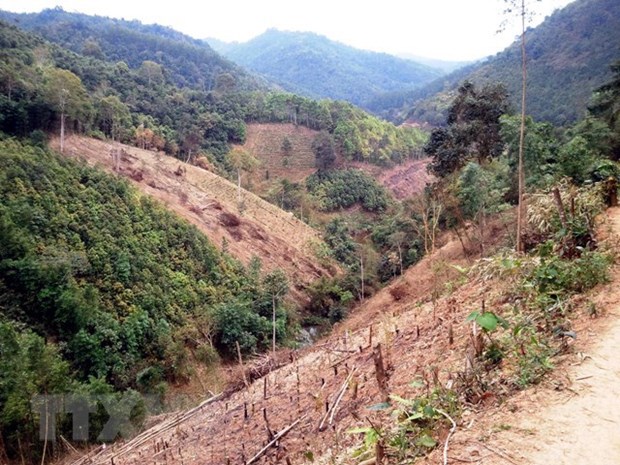 Opinion
Opinion


|
| Although the number of forest destruction cases has dropped considerably, illegal forest exploitation and deforestation still happens in some areas. —VNA/VNS Photo for illustration. |
Hà Công Tuấn, Deputy Minister for the Ministry of Agriculture and Rural Development, talks to Vietnam News Agency on the forestry sector’s achievements
What are the achievements Việt Nam has gained in the four years since implementing Prime Minister Nguyễn Xuân Phúc’s decision to close natural forests?
Việt Nam has achieved three remarkable achievements following PM Phúc’s decision to close the natural forests across the country since 2017.
In the period, no case of timber extraction from natural forests or forests which have been certified as international sustainable management forests has been reported.
The transfer of forest use purpose has been tightened and we're only considering the transfer of forest use for important projects serving national defence, security or socio-economic development.
In addition, the National Assembly has revised the Criminal Code and the Law on Handling Administrative Violations to give sanctions to anyone who violates law and order in forest management activities.
From 2016-19, on average, the number of violation cases dropped by some 35 per cent nationwide and the area of damaged forest reduced by 20 per cent. Forest coverage kept increasing with total forest area exceeding 14.6 million ha by late December 2019. Forest coverage is expected to reach 42 per cent by late 2020.
Illegal forest exploitation and deforestation has been reported in Việt Nam. Why does this happen and what should authorities do to prevent such illegal activities?
Although the number of forest destruction cases has dropped considerably, illegal forest exploitation and deforestation still happens in some areas.
The key reason is that the exploitation of natural forests has been totally prohibited under law but demand for use of natural wood by some people remains and sources of imported natural wood are limited while illegal extraction of timber has become a very lucrative business.
The lack of management and responsibilities of authorities of areas where forest destruction happens is also to blame, while punishments for violators are not strict enough.
To solve this problem, local authorities should work closely together to ensure strict law enforcement in their localities.
For the time being, local authorities need to focus on the following four missions.
Firstly, the local administration needs to decentralise management over forest protection and development and have clear regulations on the responsibilities of forest owners in case of forest destruction and forest land encroachment.
Secondly, focusing on handling hotspots of forest destruction and taking back forest land encroached or having wrong usage purposes and strictly punishing violators.
Thirdly, local administrations need to pay more attention to raising local people’s awareness of protecting the forest while encouraging people to change their habits of using natural wood products.
And finally, local authorities should pay more attention to improving the livelihoods of people living near the forests.
The Government approved a plan on the protection, restoration and sustainable development of the Central Highlands region from 2016-30. How has the plan been implemented?
That plan was approved by the Prime Minister on March 18, 2019. The key objectives of the proposal are to prevent illegal forest extraction activities and then gradually restore and develop the lost forest. By 2030, the total forest area in the Central Highlands region is expected to reach 2.72 million hectares with forest coverage reaching 49.2 per cent.
The Ministry of Agriculture and Rural Development issued a decision in May 2019 on implementing the plan and giving instructions for authorities of Central Highlands localities to build detailed implementation plans. The localities have all developed specific objectives and detailed implementation plans to ensure their approved targets and objectives in forest protection and development are achieved.
They have also developed their provincial public investment plans for the next five years, from 2021-25, including projects to protect and restore forests. — VNS




